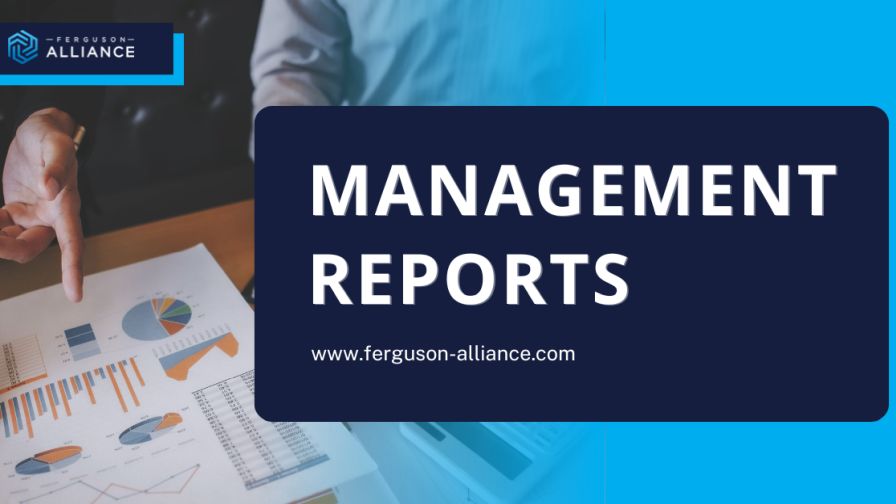
“Mastering Cost Control with Effective Management Reports” | Ferguson Alliance
For any business leader, tracking key performance indicators and making sense of your numbers is essential – and regular management reporting is a good way to make this happen. It takes a lot of effort, but, in our view, a robust management report is the most valuable tool for a well-managed, high-performing business.
What is a Management Report?
A management report is intended to objectively report management progress toward a business’ agreed-upon financial goals and/or KPIs. The report should provide a top-down view of the company’s financial health, beginning with the basics like revenue, gross profit margin, and operating expenses, plus net operating income – both before and after-tax considerations. Most importantly, a management report is an internal business document, intended to be studied and discussed internally, rather than shared for public consumption.
Reviewing management reports allows leaders to identify areas that need improvement, highlight patterns and trends, and develop strategies to improve performance, efficiency, profitability, and growth.
How is a Management Report Different from a Financial Report?
While both management and financial reports contain financial information, they serve different purposes and audiences.
Financial reports are retrospective, giving a historical view of financial performance for external stakeholders like investors and regulatory bodies.
In contrast, management reports are forward-looking, focused on tracking progress toward internal goals and facilitating decision-making among business leaders. We recommend that a management report be written and presented in a summary format, primarily by the executive sales and operational business leaders.
What Are the Key Benefits of a Management Report?
Regular and accurate management reports provide a host of benefits for any organization – including the following:
1. Identifying Cost Variance
All too often, we find company shareholders and CEOs who are frustrated when they discover they aren’t meeting profit expectations. Often, they find that a root cause of this failure is a lack of cost accountability.
A management report format can provide an essential top-down cost review, ranging from the cost of goods sold to operating costs and G&A (general and administrative) costs. The report should also provide a variance to the budget or profit goal with a positive or negative result in both dollar and percentage terms.
2. Improving Decision-Making, Accountability, and Insight
Management reporting is vital for business leaders because it enables quick, data-driven decisions. These reports provide accurate insights into KPIs, allowing leaders to set performance goals and drive necessary changes.
Operational leaders, not financial leaders, should explain cost variances. This ensures accountability and provides insights into whether variances are due to actual cost differences or timing differences (e.g., costs budgeted for April but incurred in August). Negative variances that are not timing-related require explanations of why and how extra costs were approved.
3. Enhancing Internal Cost Controls and Forecasting
Management reports play a critical role in assessing internal cost controls and improving forward forecasts. When unexpected costs are incurred, it is essential to evaluate the approval processes and internal controls that allowed these expenses. This evaluation helps identify weaknesses and develop strategies to prevent future budget overruns.
4. Developing Effective Managers
A robust management report is more effective than a traditional financial statement in driving goal attainment and developing effective managers. By providing detailed insights into cost variances and operational performance and aligning focus and improvement initiatives management reports help leaders make better decisions that align with the company’s goals.
For additional information and an expanded look at the topic of achieving cost control and accountability through management reports, make sure to read the original article on the Ferguson Alliance website.

